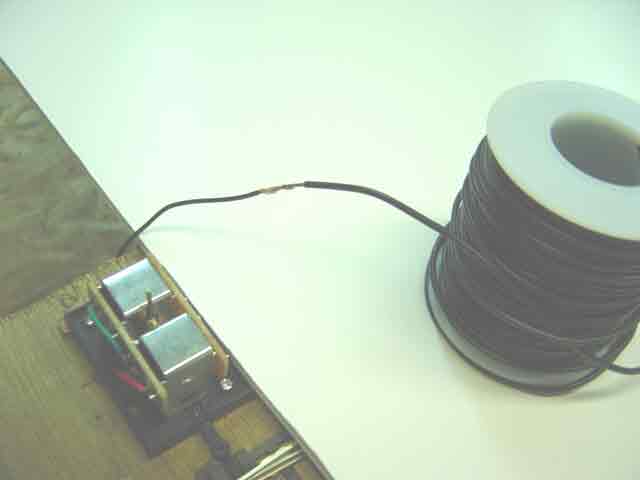The first step in creating a soldered joint between two wires is to connect the stripped ends together in a tight mechanical connection. The reason that the stripped ends must be tightly fitted together before soldering is that the wires must be absolutely motionless while the solder is cooling. If the two ends are not tightly bound together before the solder is applied, they might slip or "jiggle" apart slightly (due to their own weight or springiness) while the melted solder is cooling. If this happens, the solder might not smoothly flow through the joint. Instead, the solder could form an ugly, high-resistance lump known as a cold solder joint. When this happens, the "bad" solder must be melted away and the joint must be re-soldered. Cold solder joints are a menace to the conductivity of an electric circuit.
Our method of creating a tight mechanical connection before soldering is first to cross the two stripped ends at their middles, like two little crossed swords at the beginning of a sword fight. Then, we very tightly wrap the ends around each other, starting at the crossing point. This method of creating a tight joint has never yet failed us.
Go to top of page
|
